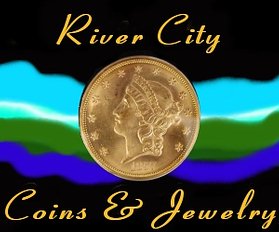Coin Collecting: From the Hobby of Kings
to the King of Hobbies
By Michael Sprouse
It is generally believed that the Kingdom of Lydia
produced the first coins about 600 BC. The first "coins"were
small globs or discs of electrum (a natural mixture of gold and
silver) stamped with various symbols and produced in different
sizes. The last ruler of Lydia, King Croesus, is credited with
introducing the first pure gold coins. Known for the vast wealth
he accumulated, most everyone is familiar with the expression
"as rich as Croesus".
I am sure that people started collecting coins
shortly after they were introduced if for no other reason than
to use them as a medium of exchange and a store of value. Given
their substantial purchasing power, only the wealthiest of citizens
could afford to collect coins. During the Renaissance, the same
wealthy patrons of the arts who collected medals, sculptures
and other works of art began adding old coins to their collections.
Between 1500 and 1700, it became quite fashionable to collect
antique coins and the rulers of many European countries began
forming collections, many of which went on to form the nucleus
of that country's current national collection.
It was not until the late 1700's that people began
to be freed of the political and economic restraints that kept
them poor and ignorant. With the new freedom came the opportunity
to advance one's social and financial standing. Gradually peoples
of the world became better educated and employed and a middle
class began to develop. More leisure time became available and
more money was freed to pursue hobbies and other interests. Even
then, it was still almost 200 years before coin collecting became
a popular pastime among the general population in the 1940's.
Silver coins were still being minted and used in circulation
and gold coins were widely available for just a small premium
over their face value. However, coins still had substantial purchasing
power and not everyone could afford to collect denominations
larger than dimes or quarters. When coin collecting experienced
its first big surge in popularity in the 1960's, the lowly Lincoln
cent was the most widely collected coin.
When the mint stopped producing silver coins in
1965, many collectors stopped collecting because all of the more
desirable old coins were quickly pulled from circulation leaving
only the new cupro-nickel clad coins. Clad coins have little,
if any, intrinsic value and were not popular with old time collectors.
Since no new interesting designs were issued for circulation
in the new clad coinage during the eighties and
nineties, there were not many people entering the hobby and coin
collecting experienced a steady decline in popularity for the
last quarter of the twentieth century.
All that changed at the turn of the century with
the introduction of the circulating statehood quarter commemorative
coin program and the new "golden" dollar coin. The
publicity surrounding these issues created a multitude of interested
collectors for these coins. The statehood quarter program is
especially popular with the public and the U.S. Mint estimates
that there are 130 million people collecting them. The statehood
quarter
coin program runs through 2008 and will result in 50 different
quarter designs in general circulation.
In 2004, the mint placed into circulation two new
Jefferson nickels with designs commemorating the Lewis and Clark
Expedition and will issue two additional commemorative designs
next year. In 2006, a completely redesigned Jefferson nickel
was introduced into circulation.
Collecting coins can be an enjoyable and rewarding
pastime for people of all ages and backgrounds. Forming a collection
can be as simple as going through pocket change and coins in
circulation to build date and / or mint sets of circulating coinage.
If one chooses to collect the older, obsolete designs, they may
do so over the Internet, through the mail, or in person at coin
shows, coin shops and swap meets. Collecting coins can be educational
in many ways. Much can be learned about art, history, economics,
and geography through the study of coins. Coin collecting also
enhances one's organizational and analytical abilities.
Today's collector has a large selection of coin
books, magazines, newspapers and reference materials available
to assist them in acquiring the information important to form
a meaningful collection. With more information available than
ever before and all these new and exciting coins in circulation
in denominations that everyone can afford to collect, coin collecting
seems destined to become the true King of Hobbies.
|


